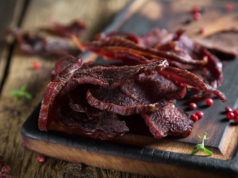The legal state of cannabis in America has changed drastically over the past few decades. In 1996, California became the first state to legalize medical cannabis, beginning a revolution that would result in a majority of US states implementing medicinal marijuana programs within the next 20 years. Since Colorado and Washington became the first states to legalize recreational marijuana in 2012, Oregon, California, Alaska, Massachusetts, Vermont, Maine, Michigan, Illinois, and Washington DC have all followed suit, making marijuana available without a prescription to millions of people.
With marijuana becoming evermore ubiquitous year by year, another cannabis product has slowly been growing in popularity that you may not have heard about: CBD, or Cannabidiol. You may have seen CBD on store shelves or online, in the form of oils, isolate, edibles, topical salves, and in dozens of other products. But what actually is CBD, and what does it do? Before explaining what CBD is, it’s helpful to understand what cannabinoids and the endocannabinoid system.
Cannabinoids are a variety of chemical compounds found in cannabis that interact with the endocannabinoid system in the human body. This system is comprised of a network of receptors and neurotransmitters that interact with cannabinoids to have a number of effects, both psychological and physiological. THC is an example of a cannabinoid and perhaps the most well-known, as it causes the distinctive, euphoric high that results from marijuana ingestion. But THC is only one of over a hundred known cannabinoids present in cannabis.
CBD is another cannabinoid found in cannabis, and while it doesn’t give you the trademark high of THC, it has many purported therapeutic benefits that have been backed by both anecdotal evidence and research alike. These benefits range from relief of chronic pain to treatment for anxiety, depression, seizures, Alzheimer’s, and drug withdrawal. Some studies have even indicated that CBD can relieve some of the more psychoactive effects of THC.
Like all cannabinoids, CBD binds to receptors in the endocannabinoid system. These receptors are called CB1 and CB2 and are located throughout the body. CB1 receptors reside primarily in the brain and spinal cord, while CB2 receptors are most commonly found in the immune system. Rather than binding directly with cannabinoid receptors as THC does, CBD binds “imperfectly”, and in the process prevents certain endocannabinoids from breaking down and essentially heightening their effects. It is CBD’s interaction with CB1 and CB2 receptors that account for its range of effects, which can differ from person to person.
The discovery of the endocannabinoid system and how CBD interacts with it provide a basis for how CBD may work, but much more research is needed before concrete conclusions can be drawn. Historically, this research has been stifled due to cannabis’ Schedule 1 classification under the DEA and corresponding illegal status. However, as anti-marijuana sentiment continues to dwindle while cannabis continues to be legalized across the country, subsequent research will eventually clarify even further what many have already attested to anecdotally.
A major stride that’s been accomplished thus far is the legalization of hemp under the 2018 Farm Bill. This opened the door for legal CBD production, as hemp is a primary source of CBD. While many strains of cannabis are grown specifically to maximize THC content, hemp is different; it contains an ineffectual amount of THC (0.3%). Per the new bill, hemp cultivation and production is now legal across the US (albeit not without a few caveats and gray areas to be worked out).
Thanks to this new law, CBD has been allowed to proliferate across the country as the hottest new health supplement. From dispensaries to health stores to supermarkets, CBD products are in the full swing of production and being featured almost everywhere as demand for them continues to rise. With this in mind, it’s important to remember that there still are no FDA-approved CBD products available over-the-counter, and currently there is no federal regulation or oversight in the cultivation and production of CBD or any other cannabis-related product.
Therefore, it’s up to you to perform your due diligence and research the manufacturer of any and every CBD product you intend to purchase. In a perfect world, every CBD production facility would operate under the highest regard for consumer safety and trust, but unfortunately this is not the case. Some of these facilities may be using harmful pesticides or methods of production that would not be approved were the FDA to review them. It may be the wonder supplement of the next age, but like any supplement, you should buy and consume CBD at your own risk.








